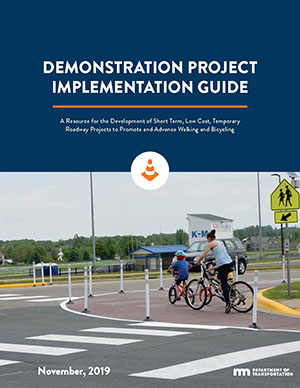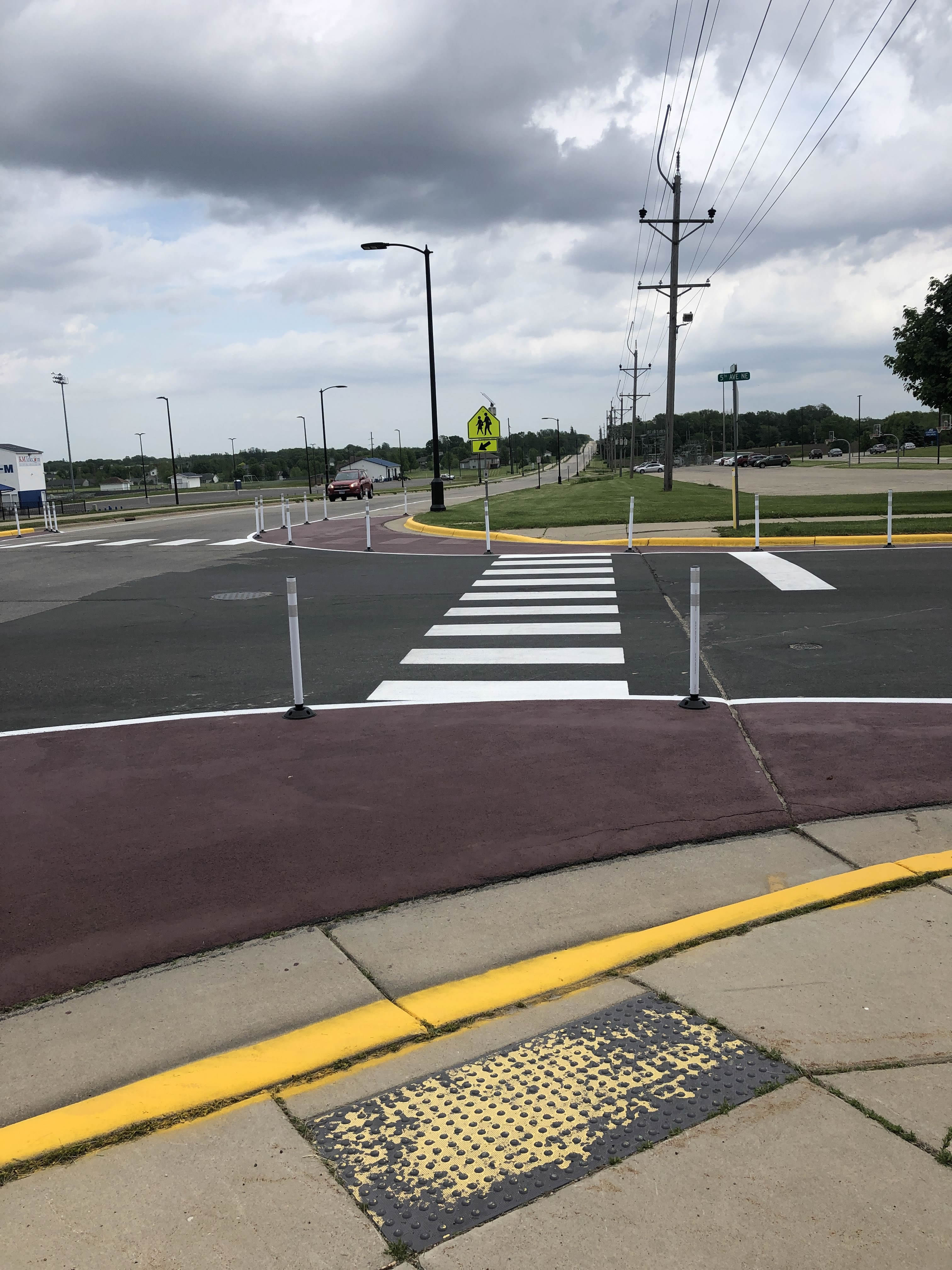Demonstration projects
Quick-build demonstration projects

Quick-build, or demonstration projects, use temporary materials to show what future changes to our roads might look like.
Short-term

On the short end, a one- or two-day project may be more about community engagement and exploring new ideas. Longer projects, such as those that are in place for an entire season, may be more focused on evaluating pedestrian and driver behavior and the impact of the project on traffic measures such as pedestrian usage, vehicle speeds or yielding rates.
Low-cost
The cost of quick-build projects will vary depending on the type, size and duration of the project as well as the materials used. In general, material costs range from $100 to $10,000 per installation. The cost of a quick-build project should be significantly less than the potential final capital infrastructure project being considered.
Why quick-build demonstration projects?
Quick-build demonstration projects allow public agencies, community partners, and people walking, bicycling, taking transit, and driving to evaluate potential infrastructure improvements before potentially investing in permanent changes.
Benefits of using a quick-build approach
- Test aspects of safety improvements before making further investments
- Inspire action and build support for project implementation
- Develop further public awareness of the potential issue and conceptual options
- Increase public engagement by inviting stakeholders to try quick-build demonstration projects for active transportation
- Increase understanding of active transportation needs in the community
- Encourage people to work together in new ways and strengthen relationships between government agencies, elected officials, non-profit organizations, local businesses, and residents
- Gather data from real-world use of streets and public spaces
Choosing a site

Demonstration projects in Kasson, Minnesota A quick-build project should be implemented at a location where the community has identified a barrier to walking and biking. This location may be from a SRTS plan, or another planning process that included conversations with community members.
Planning and design
The project location should improve overall safety and pedestrian and bicycle access to priority destinations within a community. Develop an initial sketch of the project site and potential design solutions as part of the early visioning and project exploration. Once the project location, project type, and general application have been defined, it’s time to start thinking more critically about site design and layout.
Project installation
The installation of a quick-build project requires a thoughtful breakdown of tasks, roles, and responsibilities. Consider splitting the installation into segments (e.g., mark curb extensions with dots of spray paint and paint the crosswalks on Day 1; snap chalk lines for edges of curb extensions; paint curb extensions, and install flex posts on Day 2)
Evaluation and Engagement

Data collection and public engagement are a critical component of evaluating the success of a quick-build demonstration project. Documenting conditions before and during the project installation creates a record of the community’s hard work planning and designing the temporary changes and how the project impacts the community.
Reference our Demonstration Project Engagement and Evaluation Toolkit for further guidance.
Learn more
Interested in learning more about quick-build demonstration projects for your community?
Browse our online storymap of Demonstration Projects installed in Minnesota.
Read the MnDOT Demonstration Project Implementation Guide (PDF).
